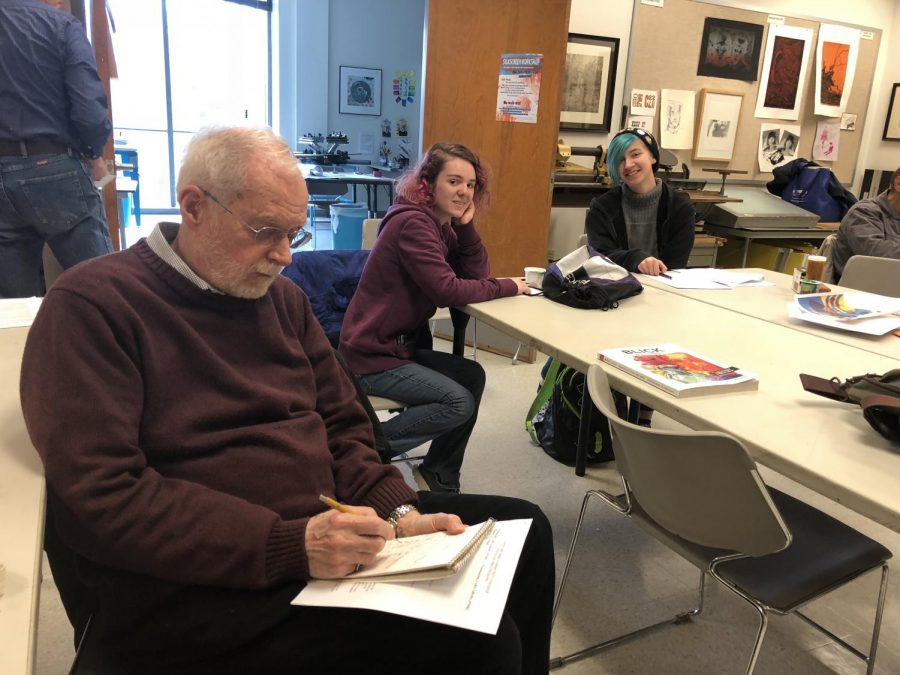All generations join in classes
Students Art Smookler, Katie Chapman and Alicia Beznoska represent the variety of generations that come together to continue their education at AACC. Photo by Roxanne Ready
February 1, 2018
Janice Oakley, 37, recalls the day she rolled out of bed three years ago to get ready to step into a college classroom for the first time in 17 years. She says she was nervous and lacked confidence, and that feeling clung to her all day.
To top it off, she forgot to bring a pen to class. As she fumbled through her purse, she thought, “What the hell am I doing here” with all of these 19-year-olds?
Then one of them offered her a pen.
And as class started, Oakley’s massive wall of worry came tumbling down.
The first day of school can be intimidating. But for students outside of the traditional 18- to 24-year-old range, age can sometimes be an additional stressor.
At AACC, 44.1 percent of students enrolled during the fall 2017 semester were outside of the traditional age range. Among them, 8.7 percent were younger than 18 and, like Oakley, 35.4 percent were older than 25.
More and more non-traditional students are attending college each year, according to the National Center for Education Statistics.
In addition to an influx of older college students, NCES studies show an increase in students younger than 18. In 1993, 1.6 percent of all community college students were younger than 18. By 2009, that number rose to 7 percent.
Some AACC faculty members say having multiple generations in the classroom is a positive for students.
“First of all, it more accurately reflects the realities of the workplace,” says Dr. Terry Portis, a psychology professor. “Secondly, there is value in perspectives one can learn from those who are younger than you are and those who are older.”
First-year history student Thomas Gomez, 21, agreed.
“They definitely have different perspectives on things, which is cool to hear because they have been through so many different life experiences. I’d say it helps for sure.”
He said he became friends with a 32-year-old classmate. “He is on a different wavelength than I am, but we share a lot of things in common,” Gomez says.
Still, some students and professors say connecting generations in classrooms and on campus can be difficult.
But Oakley disagrees. “I’m just glad that young woman saw me freaking out and had an extra pen,” Oakley says. “I thought my age would be a problem, but it turns out the only person who had an issue with my age was myself.”












